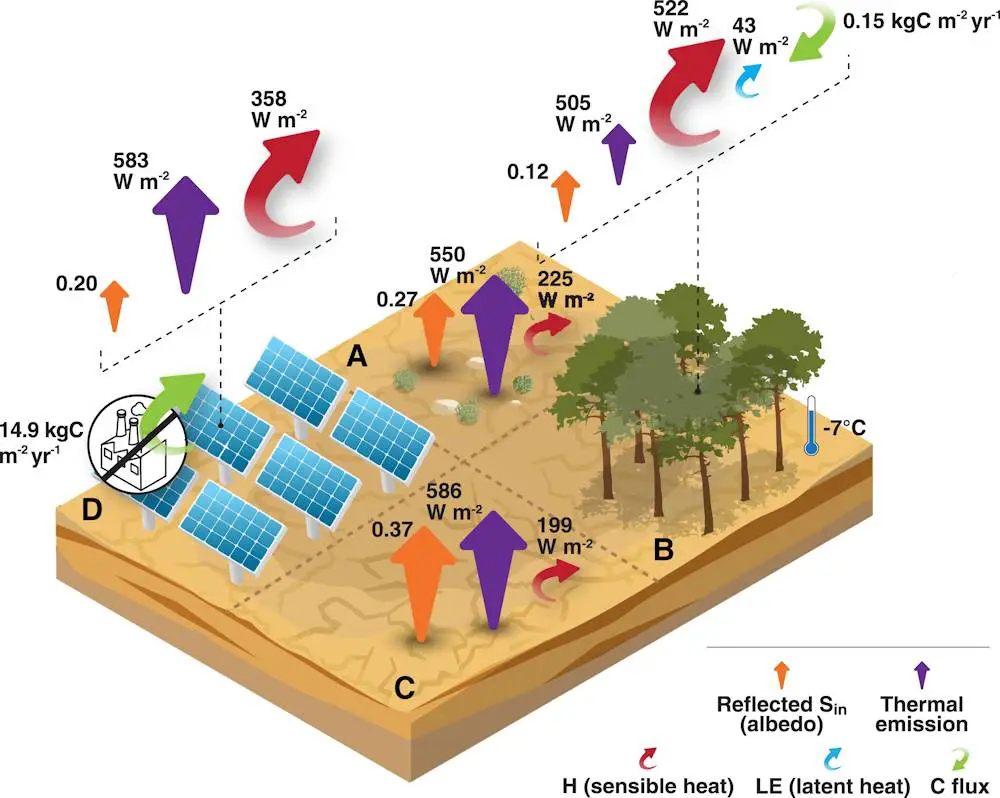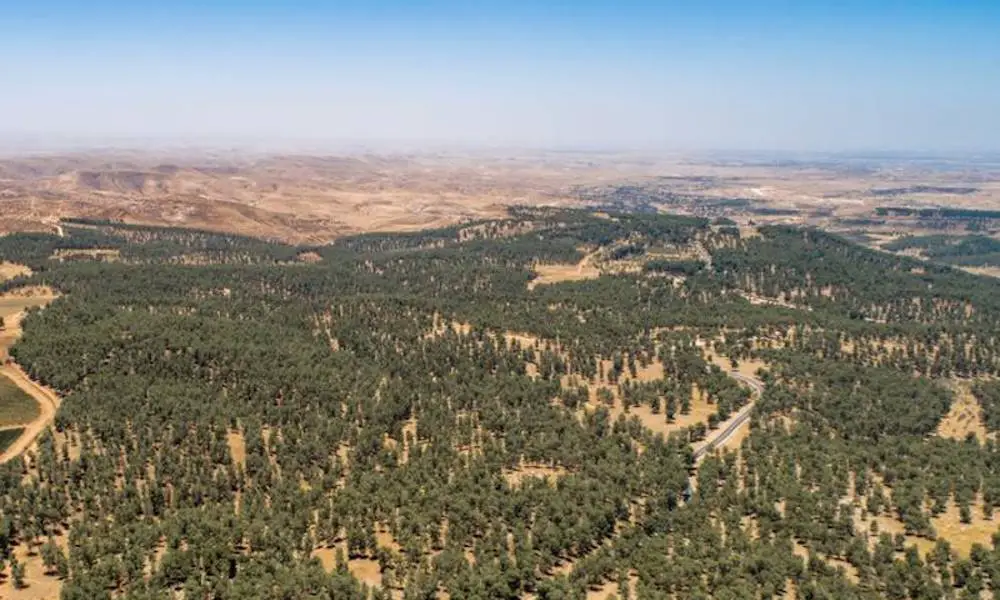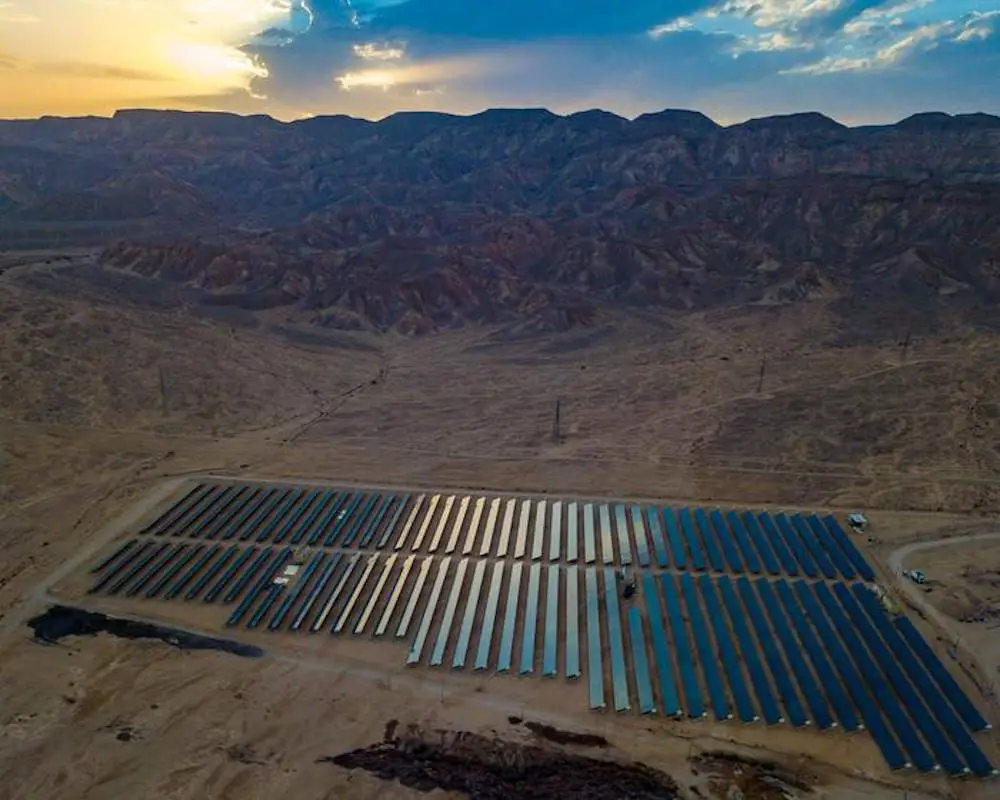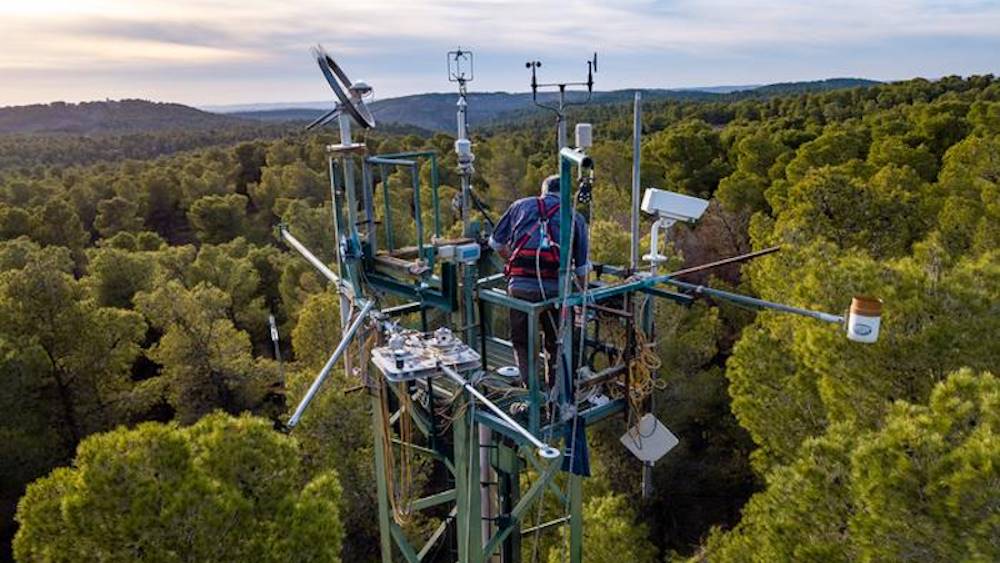In the fight against climate change, a new study suggests that photovoltaic arrays could be more effective than afforestation. Find out how the two strategies compare and why photovoltaics could be the preferred choice for climate change mitigation.
Comparison between afforestation and photovoltaic energy
Forests mitigate climate change by sequestering carbon, while photovoltaic (PV) energy does so by replacing fossil fuels. Both of these strategies also increase the global heat load because they make the Earth’s surface darker, which absorbs heat.

Rafael Stern, Jonathan Muller and their colleagues at the Weizmann Institute of Science sought to determine which type of land use—trees or solar panels—quickly compensates for the increased heat they produce as a result of surface darkening.
Study results
The authors measuredalbedo surface in a solar field in the hyperarid region of the Arava Valley in Israel. Afforestation data were measured at a research station located on the edge of the Yatir Forest in the northern Negev Desert.
From this data, they calculated the time needed to balance the positive radiative forcing due to albedo reduction and the negative radiative forcing due to the removal of carbon emissions from photovoltaic power generation or carbon sequestration through forests.

In semi-arid countries, PV arrays will reach equilibrium and begin to provide benefits in the fight against climate change after about 2.5 years, which is more than fifty times faster than afforestation.
In wetlands, the gap is not as wide, but solar panels still have an advantage.

However, the authors point out that forests offer many benefits beyond the fight against climate changeincluding ecosystems, climate regulation and social services.
For better understanding
What is reforestation?
Afforestation is the process of planting trees on land that has not been reforested for at least 50 years. It contributes to the fight against climate change by sequestering carbon, which helps reduce the amount of CO2 in the atmosphere.
Photovoltaic energy contributes to the fight against climate change by replacing fossil fuels, which reduces greenhouse gas emissions.
Surface albedo is a measure of the reflectivity of the Earth’s surface. In this study, it was measured in a solar field located in the hyperarid region of the Arava Valley in Israel.
What other benefits of forests are mentioned in the study?
In addition to their role in combating climate change, forests provide many other benefits, including ecosystems, climate regulation and social services.
What is the main conclusion of the study?
The main conclusion of the study is that although both afforestation and PV power contribute to combating climate change, PV power appears to bring benefits faster, especially in semi-arid regions.
The main lesson
| Learning |
|---|
| Photovoltaic energy and afforestation contribute to the fight against climate change |
| Photovoltaic energy delivers climate benefits faster than afforestation |
| In semi-arid regions, photovoltaic energy starts to bring climate benefits after about 2.5 years |
| Forests provide many benefits beyond combating climate change, including ecosystems, climate regulation and social services |
| Surface albedo was measured in a solar field located in the hyperarid region of the Arava Valley in Israel |
Reference
Rafael Stern, Jonathan Muller and colleagues. “Photovoltaic arrays surpass afforestation as a global climate change mitigation strategy“. https://doi.org/10.1093/pnasnexus/pgad352
(writing)

